How SpaceX's Crew Dragon launch abort test today works in 10 not-so-easy steps
Liftoff is set for 10:30 a.m. EST (1530 GMT).
NOTE: This story has been updated to reflect SpaceX's new launch time.
SpaceX will fly a major test flight of its Crew Dragon space taxi today (Jan. 19) to prove the spacecraft's launch escape system can carry astronauts to safety in the event of a rocket emergency. The launch, set for 10:30 a.m. EST (1530 GMT) is unlike anything SpaceX has done before.
Called an in-flight abort, the SpaceX test will demonstrate Crew Dragon's SuperDraco launch abort system designed to rip the spacecraft free of its Falcon 9 rocket in the event of a launch failure. It's the last major test for Crew Dragon before SpaceX can start flying astronauts for NASA under a Commercial Crew Program contract.
You can watch the launch live here and on the Space.com homepage, courtesy of SpaceX, beginning at about 10:10 a.m. EST (1510 GMT). You can also watch the launch directly from SpaceX here, or from NASA here.
Scroll down for a look at how the major SpaceX test flight will work in 10 steps.
1. Launch
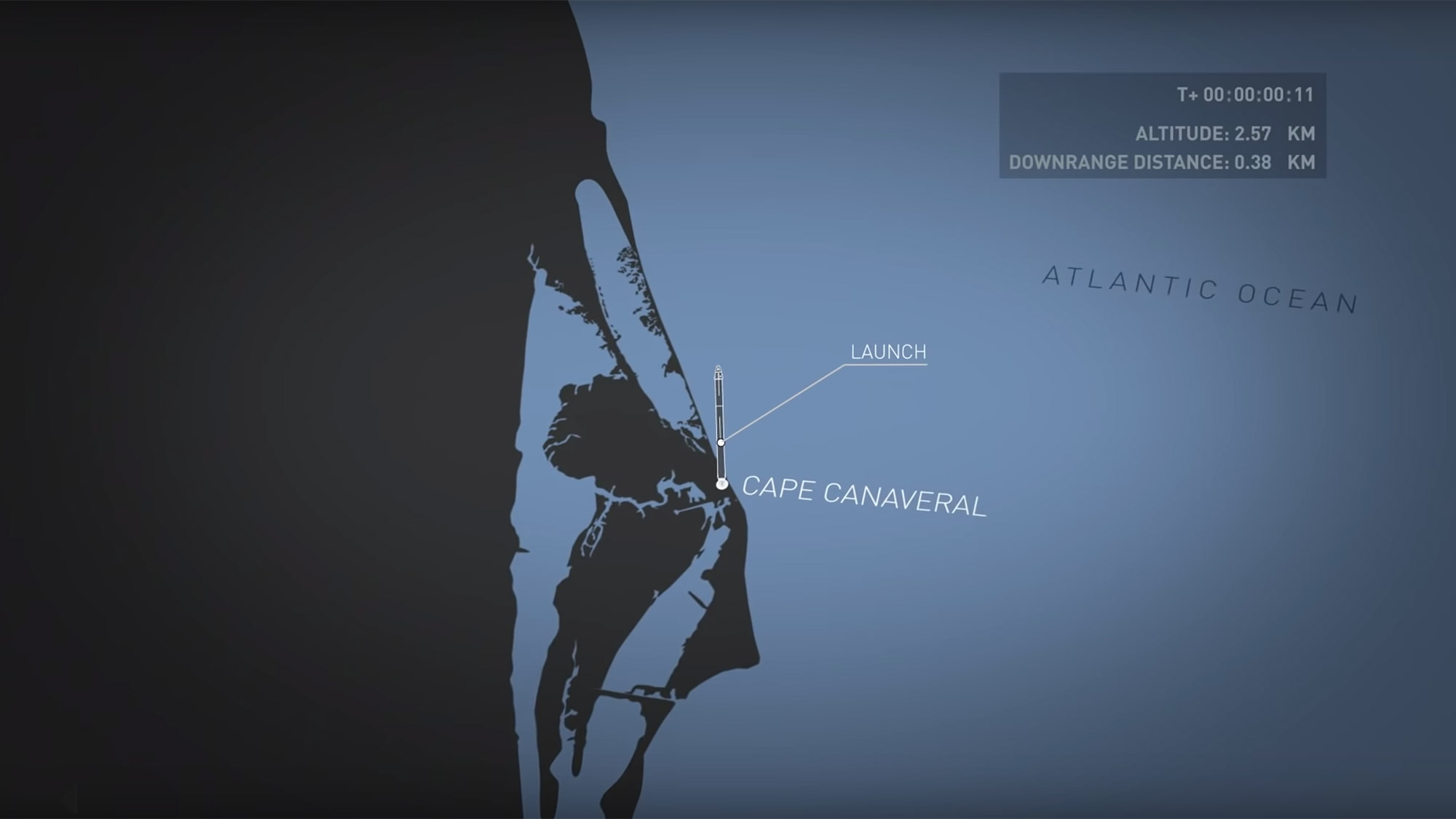
Like every SpaceX mission, Crew Dragon's in-flight abort test begins with a Falcon 9 launch.
Liftoff is set for no earlier than 10:30 a.m. EST (1530 GMT) from the historic Launch Pad 39A of NASA's Kennedy Space Center. In the hours leading to launch, SpaceX and NASA will practice everything needed for an actual crew launch.
Get the Space.com Newsletter
Breaking space news, the latest updates on rocket launches, skywatching events and more!
SpaceX has a 6-hour window in which to launch Crew Dragon and wants optimal weather conditions for the launch itself, as well as for the spacecraft's offshore recovery in the Atlantic Ocean. Visibility is a key concern for the launch.
SpaceX has already delayed the launch 24 hours (from Saturday, Jan. 18) due to bad weather. Another launch opportunity is on Monday, Jan. 20, but weather forecasts are less favorable.
2. A proven rocket
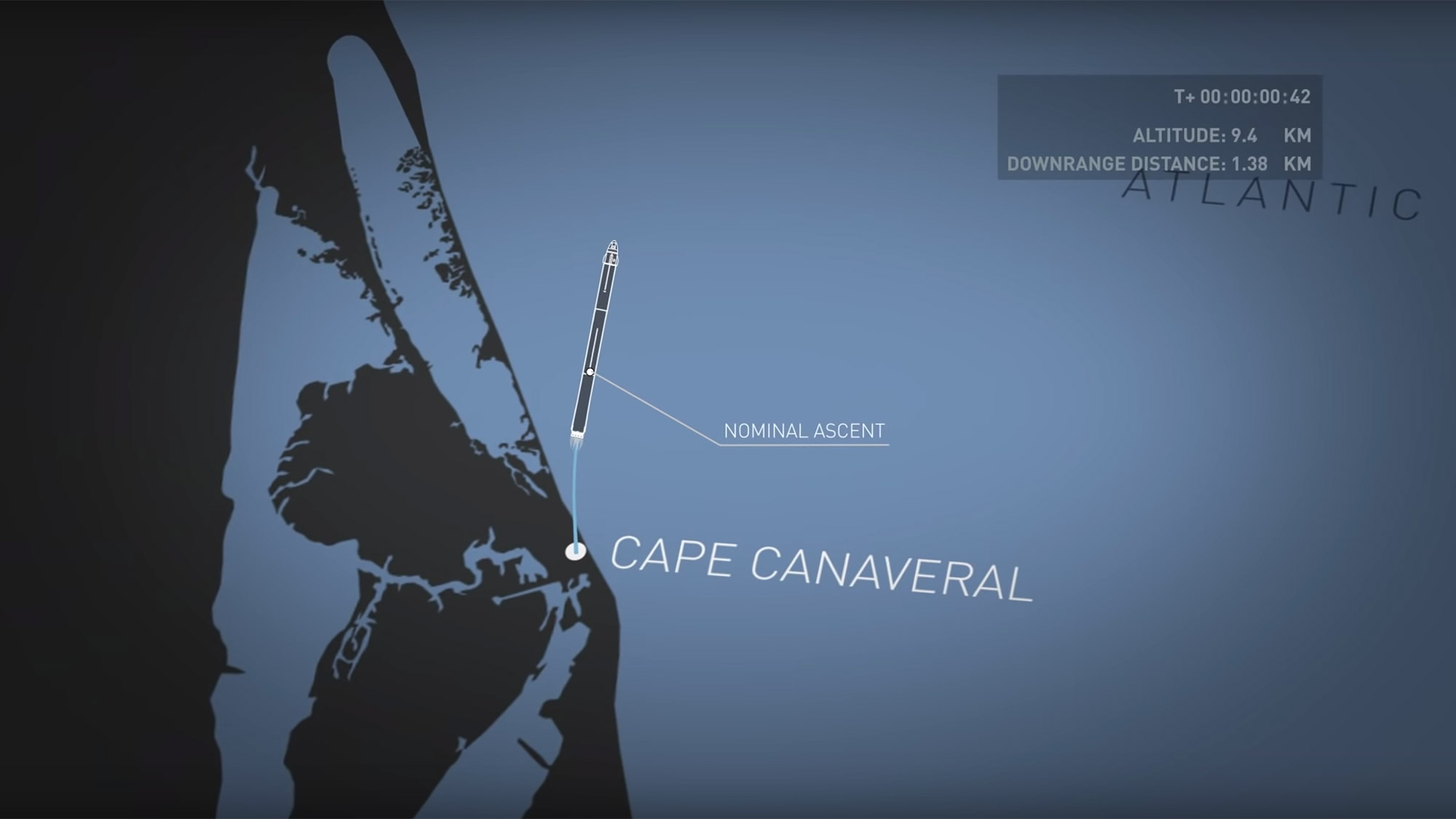
SpaceX is using a proven rocket for the Crew Dragon in-flight abort test.
The Falcon 9 first-stage booster on this flight is making its fourth flight and is actually the first Block 5 version of the rocket SpaceX ever launched. The booster launched a satellite for Bangladesh in May 2018, an Indonesian satellite in August of that same year and then finally a set of 64 satellites in a rideshare mission in December 2018.
SpaceX will not recover this veteran booster. It should break apart, or maybe even explode, after Crew Dragon separates from the rocket's second stage. The first and second stages are fully fueled, but the second stage carries a mass simulator in place of an engine since one is not needed for this flight.
3. SuperDraco abort engines fire
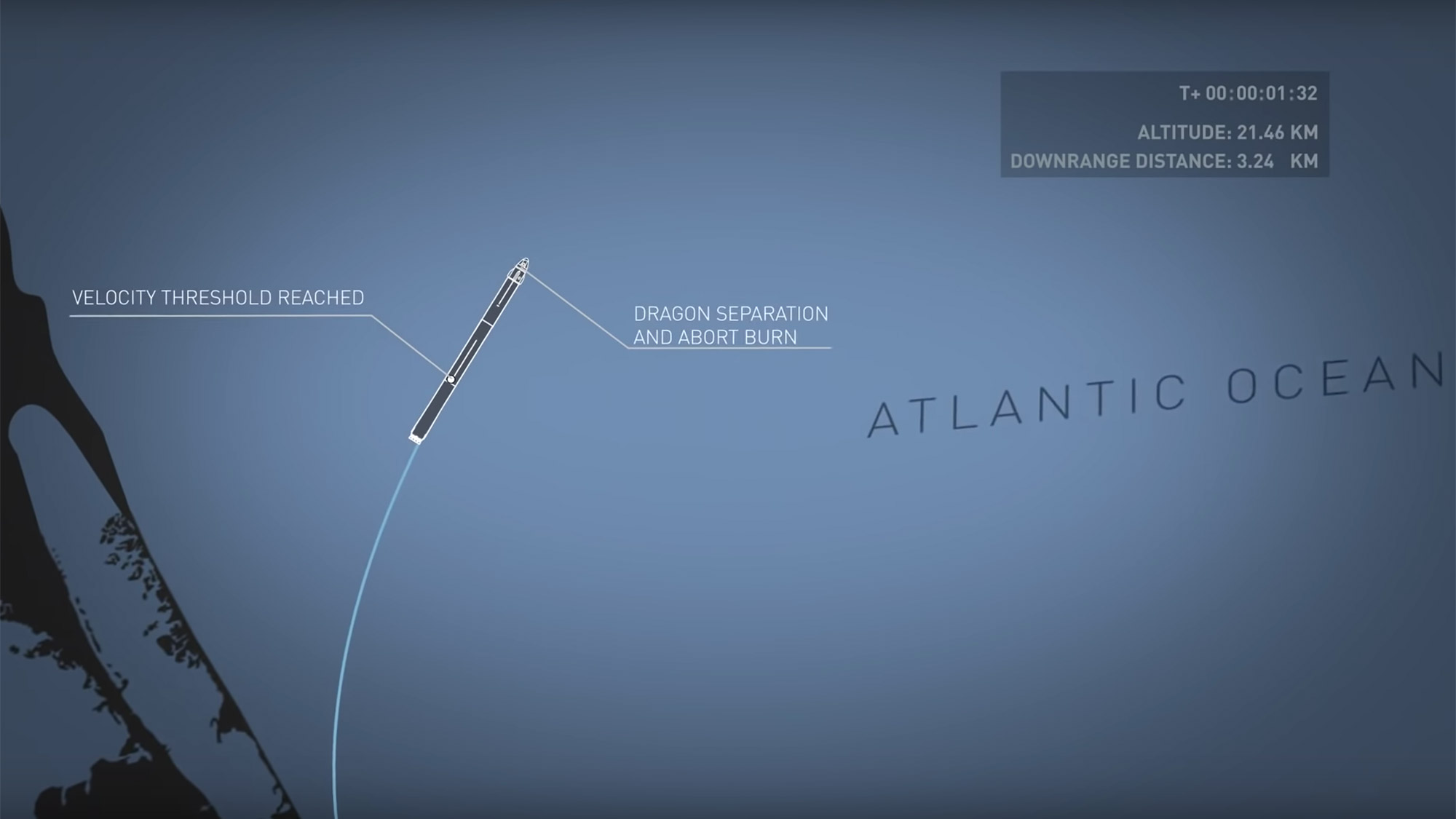
Precisely 84 seconds after liftoff, as the Falcon 9 rocket is flying Mach 2.3, Crew Dragon will fire its eight SuperDraco engines and rip itself free of the rocket's second stage.
SpaceX is triggering the abort test while Crew Dragon and its Falcon 9 are about 14 miles (19 kilometers) high and 2.5 miles (4 km) down range.
"Dragon will leave the Falcon very quickly," Benji Reed, SpaceX's director of crew mission management, said during a news conference Friday (Jan. 17).
The open maw of Falcon 9's second stage, still attached to the first stage booster, should act as an air scoop, slowing the booster and ultimately leading it to break apart. The booster could explode and be visible from the ground, Reed said.
"There will probably be some ignition," Reed said. "We'll see something."
4. Abort system shutdown
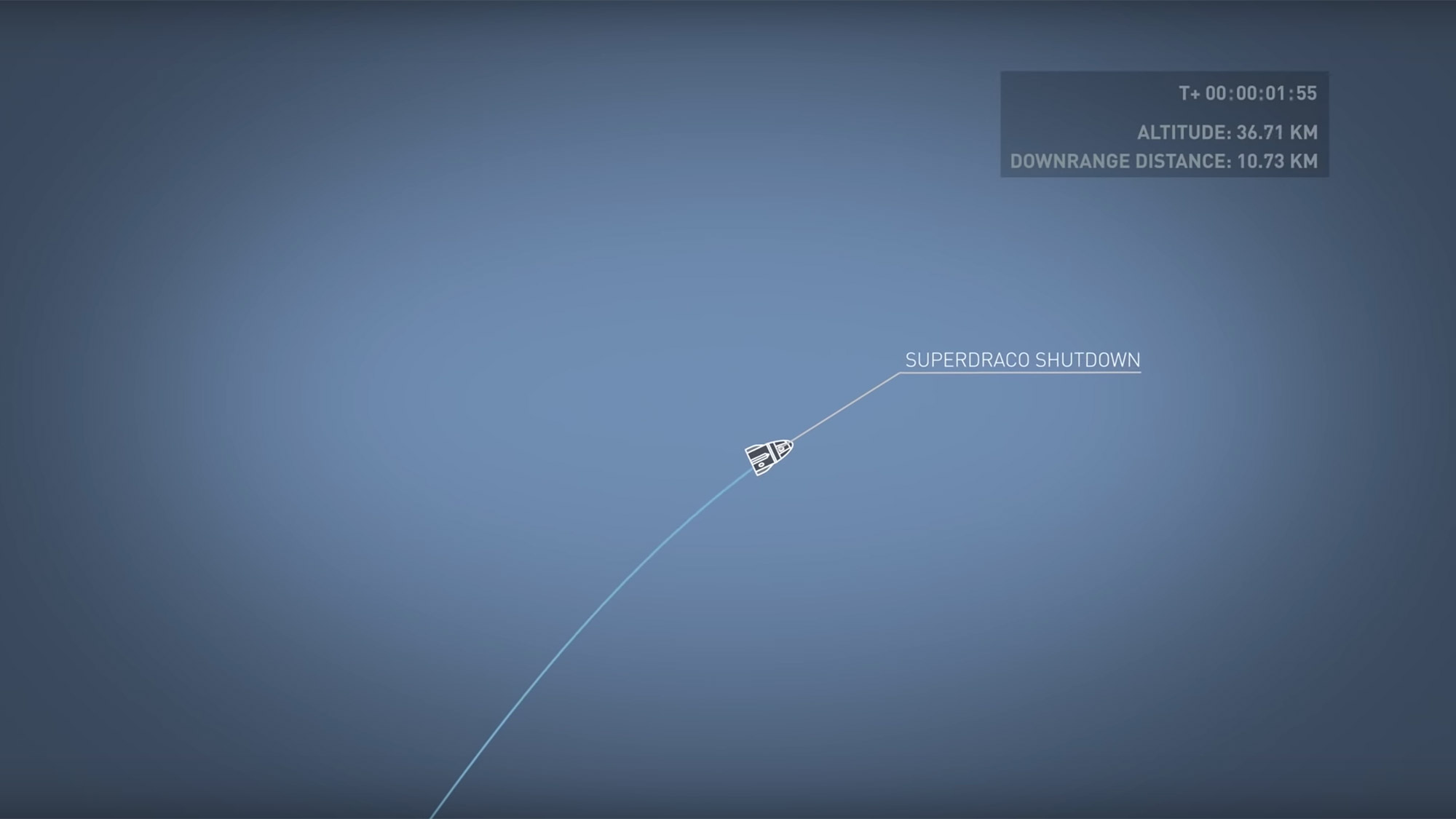
Crew Dragon's SuperDracos will fire for 10 seconds, pulling the capsule free of the Falcon 9 and carrying upward on a suborbital trajectory.
The eight SuperDraco on Crew Dragon are arranged in four pairs of two around the capsule's side walls, with each capable of generating 16,000 lbs. of thrust. They are more advanced and more powerful than Dragon's Draco attitude thrusters. SpaceX makes them through direct metal laser sintering, essentially 3D printing.
5. Crew Dragon trunk jettison
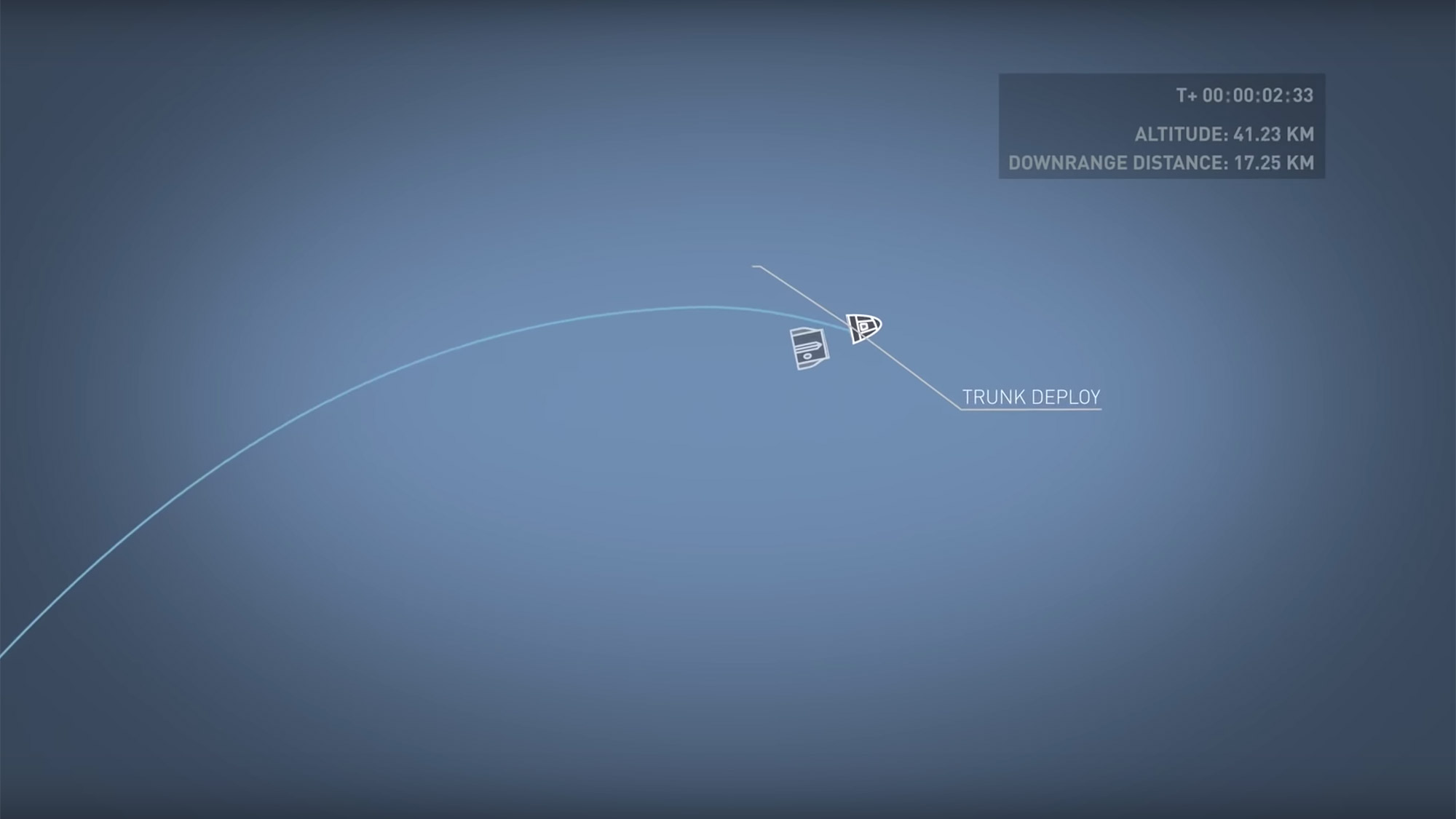
About 2.5 minutes after liftoff, Crew Dragon will jettison its "trunk" service module. The cylindrical, finned module contains the solar arrays and other gear required to sustain Crew Dragon's taxi flights to the International Space Station for NASA.
During reentry, Crew Dragon jettisons its trunk just like SpaceX's Cargo Dragon vehicles. This clears the spacecraft's heat shield for entry and prepares the spacecraft for a splashdown landing in the ocean.
6. Prepare for entry
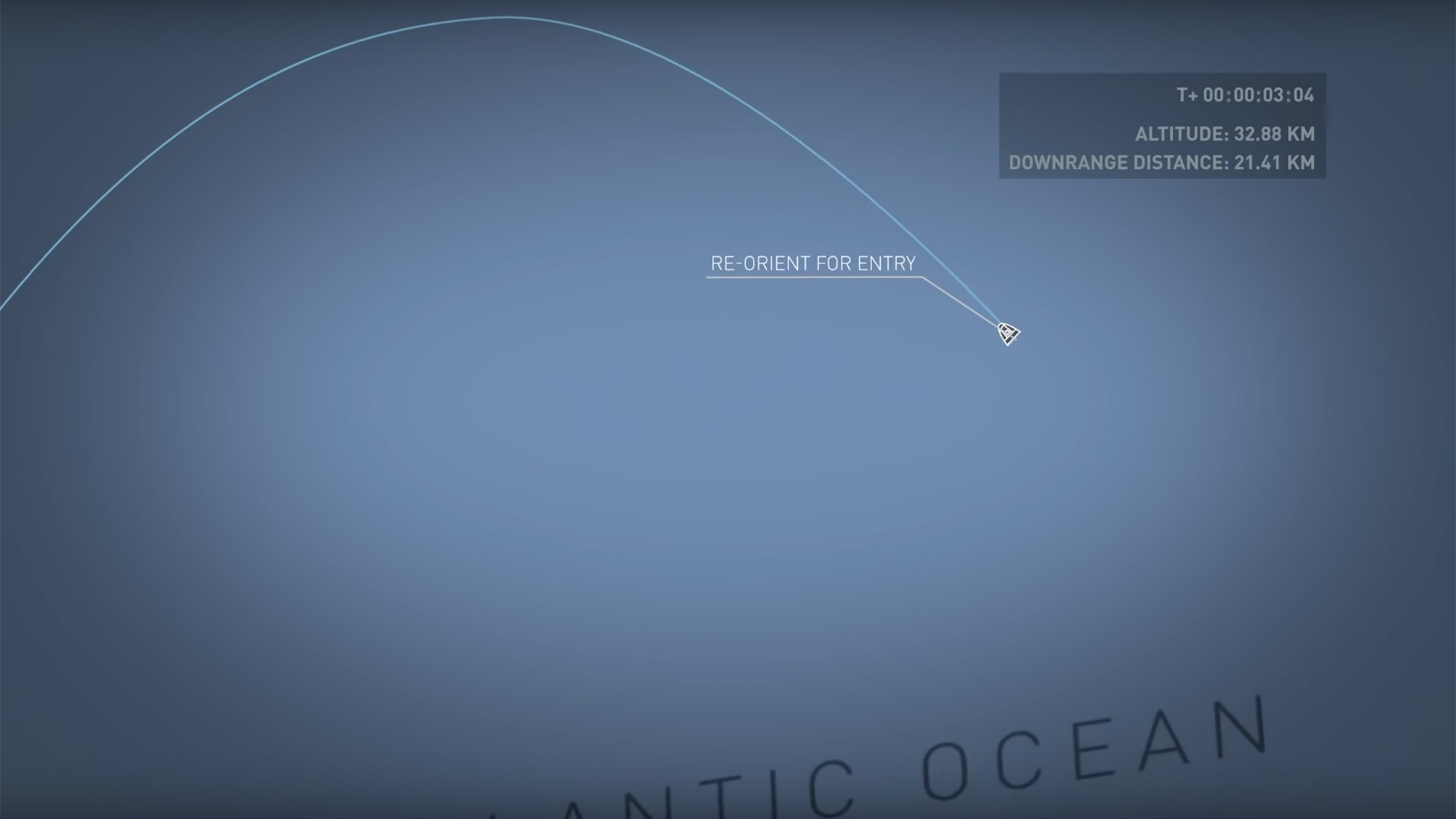
Just after the 3-minute mark, Crew Dragon will fire its regular Draco thrusters to orient the space capsule for entry and splashdown.
Crew Dragon will not reach space on this launch. The highest the capsule should fly is about 24.8 miles (40 km), according to Reed.
7. Drogue chutes deploy
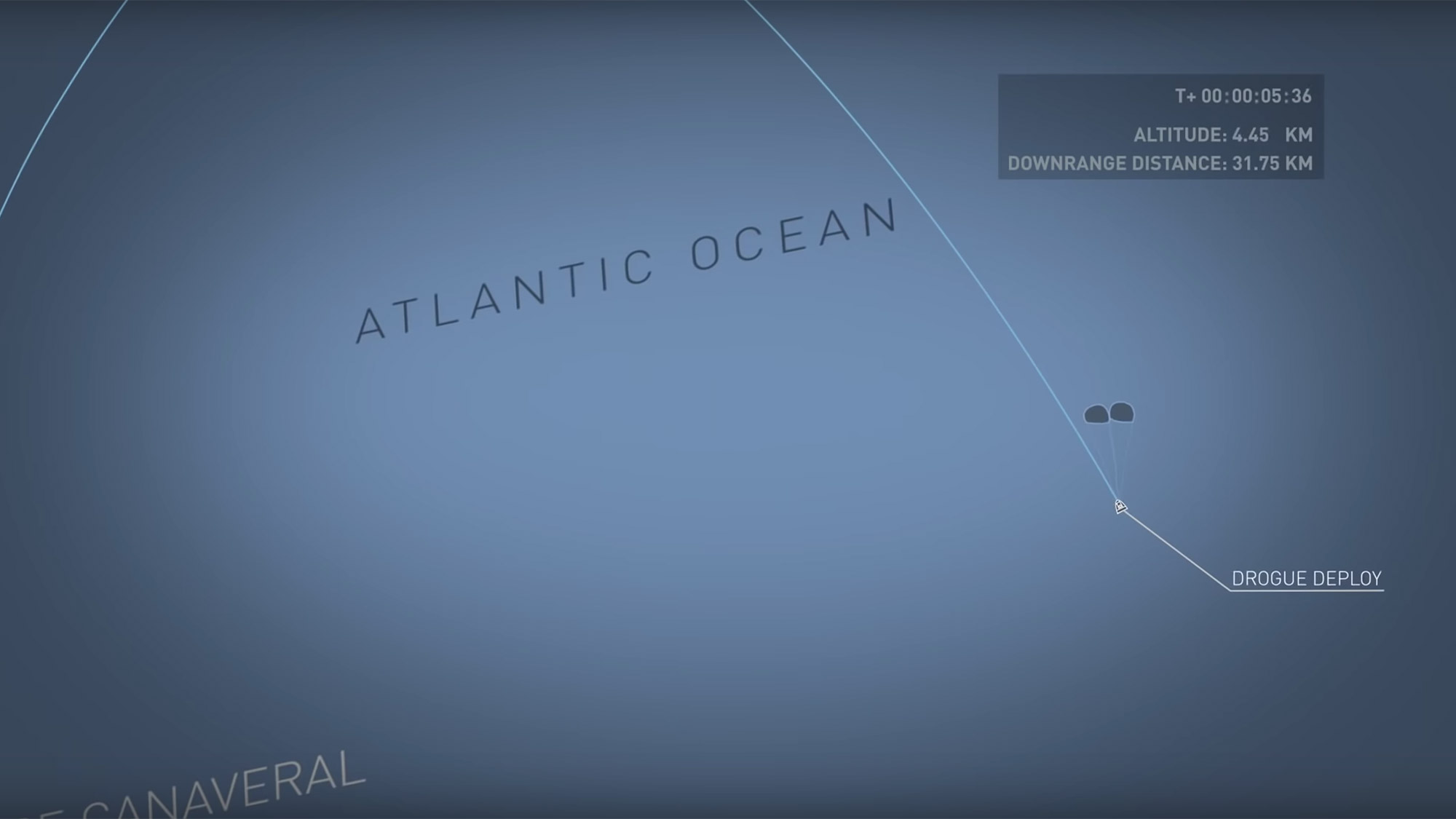
About 5.5 minutes after liftoff, Crew Dragon will begin releasing parachutes to slow itself for splashdown.
The first still will be the release of two drogue chutes to stabilize the capsule and prepare it for the release of its four main parachutes.
8. Main parachutes deploy
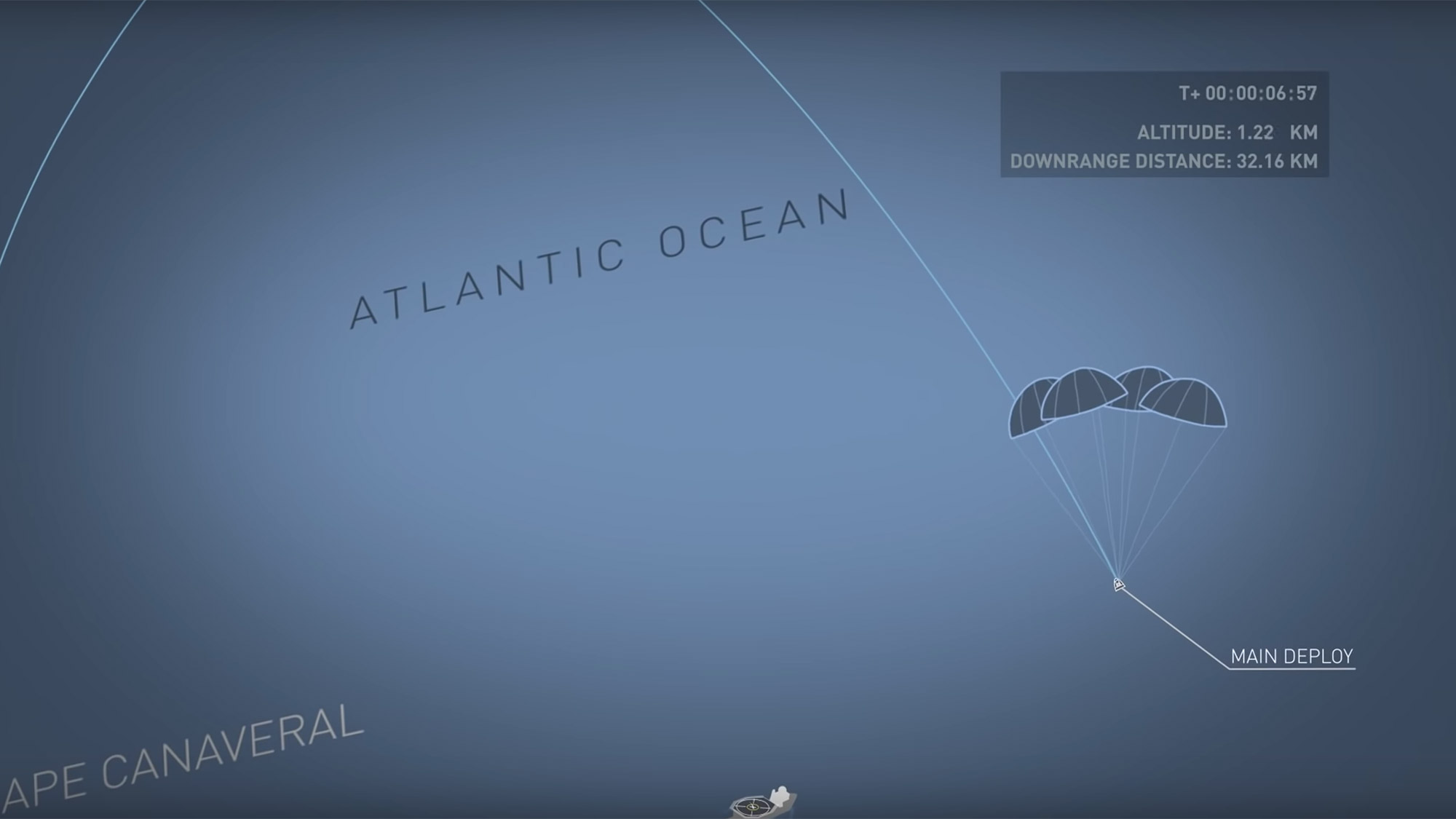
Shortly after the drogue chutes deploy, Crew Dragon will release its four main parachutes to slow the spacecraft's descent ahead of splashdown.
The parachutes on this Crew Dragon are SpaceX's newest version, the Mark 3 parachute design. SpaceX has been testing parachutes to make sure they will safely return a Crew Dragon to Earth. To date, the company has flown 80 tests, including 10 successful tests of the four-parachute arrangement.
This flight will mark a major practical test of the parachute design, which has passed a series of drop tests in recent months, but not yet been used in an actual flight.
9. Splashdown
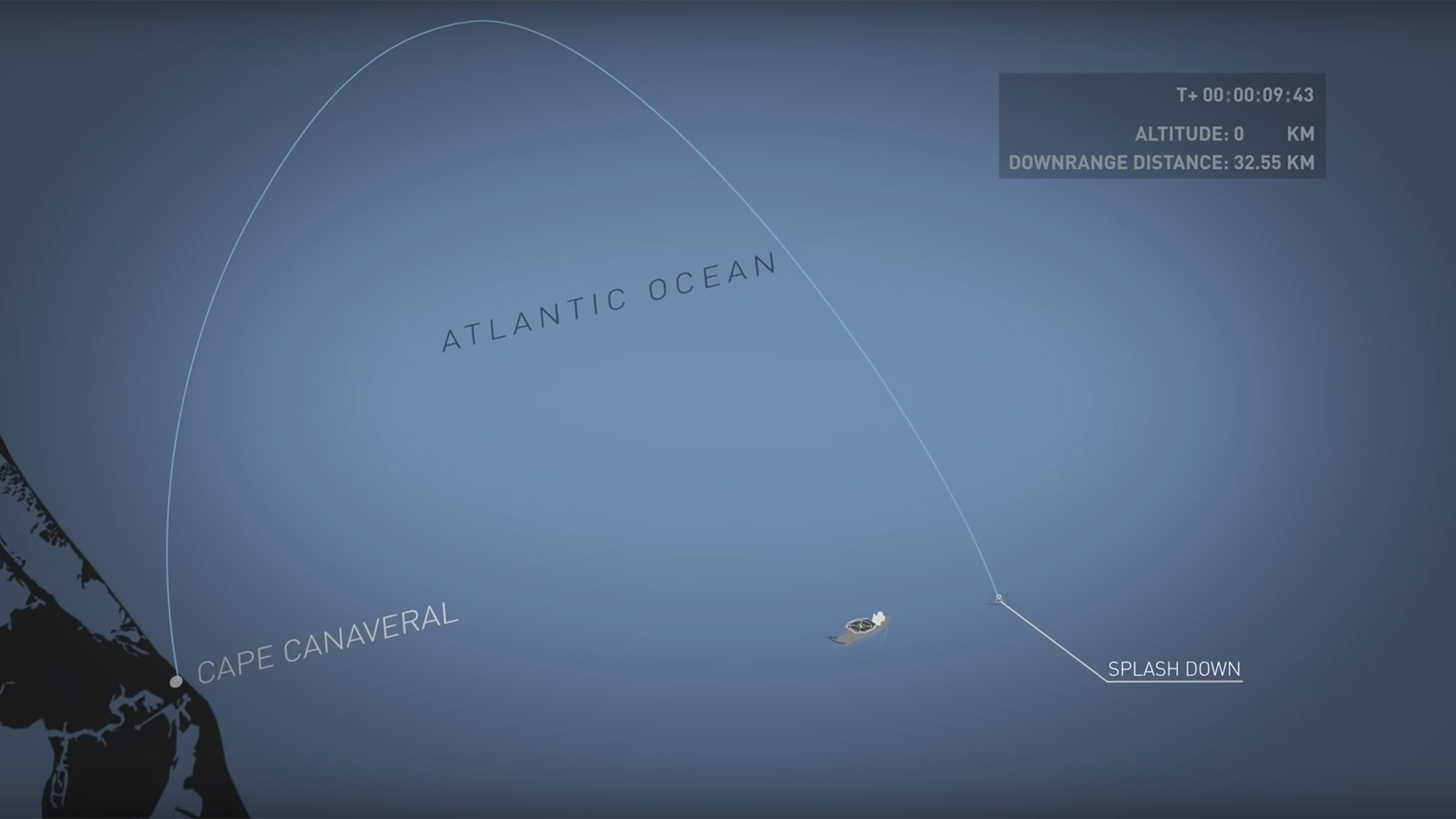
About 10 minutes after launch, Crew Dragon will splashdown in the Atlantic Ocean. According to Reed, the drop zone is between 18 and 21 miles offshore (30-35 km).
SpaceX's recovery ship, the GO Searcher, will be looking for Crew Dragon ahead of its splashdown, setting the stage for the final step of the mission: Recovery.
10. Crew Dragon recovery
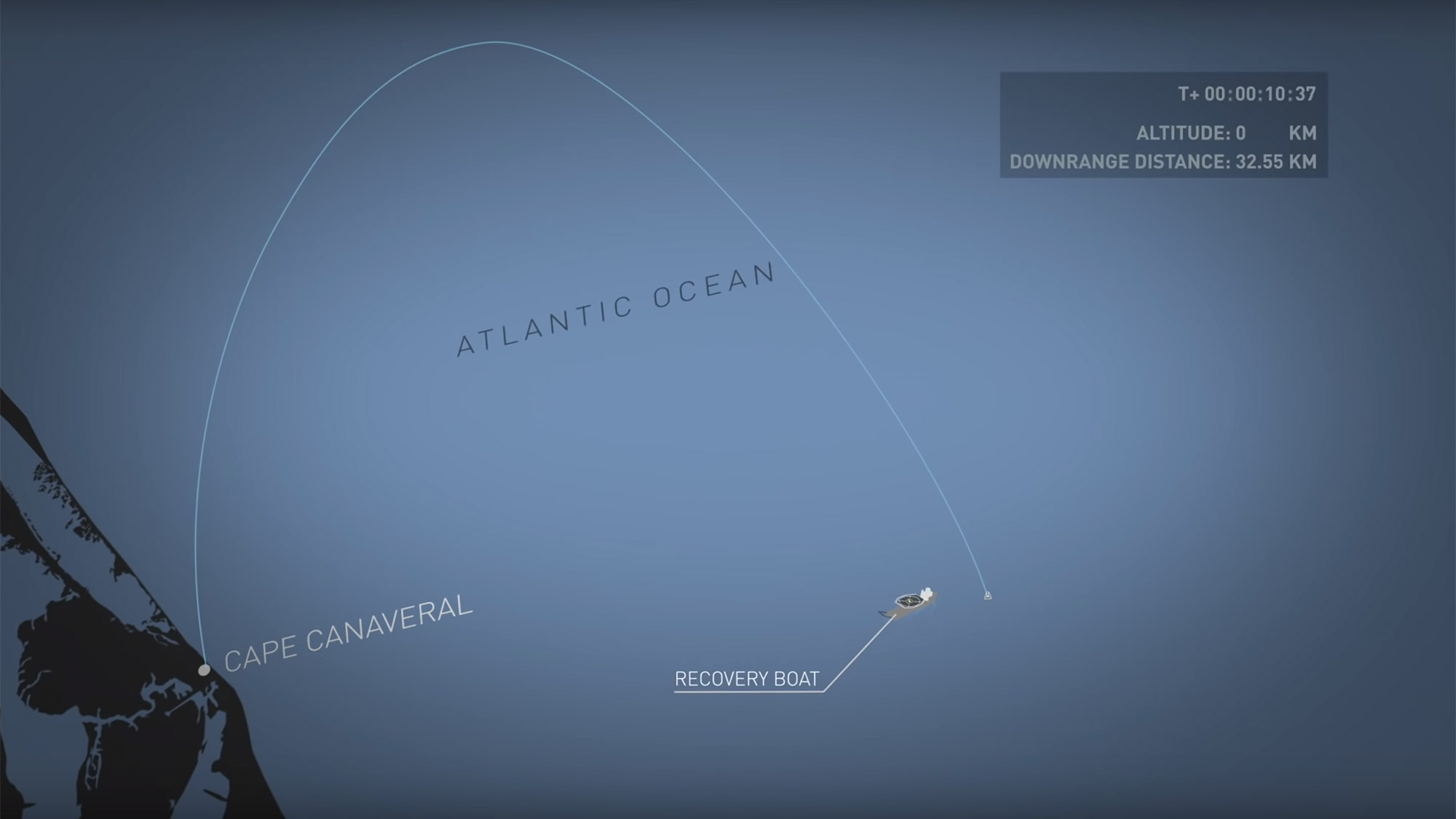
Crew Dragon's in-flight abort test will give SpaceX a unique chance to test its recovery procedures for astronauts returning from space.
The company has staged its recovery ship, the GO Searcher, near the splashdown zone and expects its retrieval team to reach the capsule shortly after it lands.
"When Dragon splashes down, we'll be approaching the vehicle within minutes," Reed said.
In addition to its regular recovery team, SpaceX has enlisted the aid of the Air Force Detachment-3, an emergency team of divers and officials on call to aid astronaut recovery in the event of an emergency.
After Crew Dragon is safely on board GO Searcher, the ship will return to Cape Canaveral so it can be studied to see how it fared during the test.
SpaceX hopes to begin flying astronauts to the International Space Station for NASA later this year. The first crewed flight, carrying NASA astronauts Bob Behknen and Doug Hurley on the Demo-2 flight, could launch as early as March if the abort system test goes well, according to Spaceflight Now.
SpaceX is one of two companies with multi-billion-dollar contracts to fly astronauts for NASA. The other company, Boeing, will fly astronauts on its Starliner spacecraft, which launches on a crew-rated Atlas V rocket. Boeing also plans to begin crewed flights this year.
- SpaceX's Crew Dragon Demo-1 test flight in pictures
- Watch how SpaceX's Crew Dragon will launch astronauts into space (video)
- In photos: A behind-the-scenes look at SpaceX's Crew Dragon spaceship
Follow us on Twitter @Spacedotcom or on Facebook.

Join our Space Forums to keep talking space on the latest missions, night sky and more! And if you have a news tip, correction or comment, let us know at: community@space.com.

Tariq is the Editor-in-Chief of Space.com and joined the team in 2001, first as an intern and staff writer, and later as an editor. He covers human spaceflight, exploration and space science, as well as skywatching and entertainment. He became Space.com's Managing Editor in 2009 and Editor-in-Chief in 2019. Before joining Space.com, Tariq was a staff reporter for The Los Angeles Times covering education and city beats in La Habra, Fullerton and Huntington Beach. In October 2022, Tariq received the Harry Kolcum Award for excellence in space reporting from the National Space Club Florida Committee. He is also an Eagle Scout (yes, he has the Space Exploration merit badge) and went to Space Camp four times as a kid and a fifth time as an adult. He has journalism degrees from the University of Southern California and New York University. You can find Tariq at Space.com and as the co-host to the This Week In Space podcast with space historian Rod Pyle on the TWiT network. To see his latest project, you can follow Tariq on Twitter @tariqjmalik.
-
TEAMSWITCHER It's safe to say that the International Space Station is the biggest misnomer of all time. Yes it is "In Space" but barely. The original vision of ISS was abandoned decades ago - where it would be used as a starting point for deep space exploration. Today, the only place you can get to from ISS is ... back to Earth. It's an expensive, high altitude, micro-gravity research facility .. NOT A SPACE STATION.Reply









